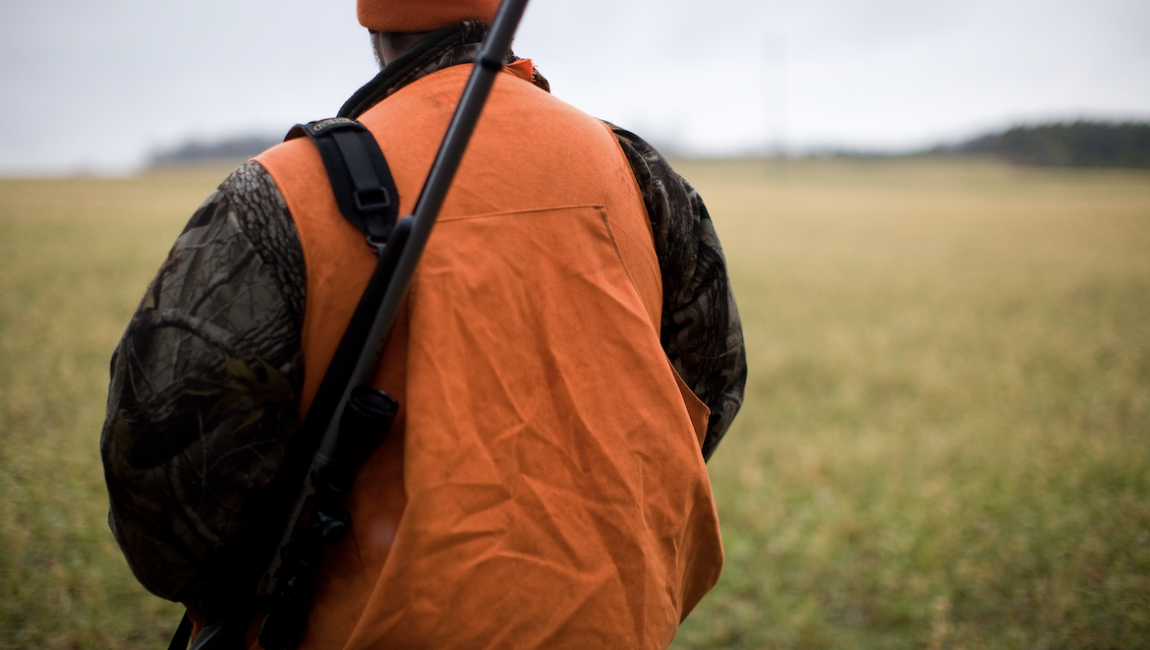
We get it. You’ve been dreaming about this moment since you first laid eyes on him walking past your trail cam… Mr. Big Buck himself. It’s opening day, and you are ready to roll. But hold on there, fast shooter – a couple extra minutes spent on some safety basics will help ensure you make it back home to tell your great hunting tale.
Whether you’re hunting with a group or going solo, here are the MUSTS of safe hunting protocol.
The Lone Wolf
1. Communicate your location.
Always tell a friend or family member where you are hunting – even if it means revealing your special spot. It may mean personally showing your spouse or friend where you have placed your tree stand or blind. Let them know your expected route. Better yet, download a GPS app to your smartphone and share your location with your trusted emergency contacts–anything that will help first responders find you as quickly as possible when necessary.
2. Share your plan.
Along with letting others know where you will be hunting, let them know what time they can expect you home, or to hear from you. If you get lucky and make a hit, let someone know you may be tracking for a while. At this point, it’s good to call a friend to help track, get that amazing photo and help you haul that beast out of the woods.
3. Wear a harness.
Contrary to popular belief, more hunting accidents involve a tree rather than a gun. One study reported these stats about tree falling victims:
- 81% needed surgery
- 59% had spinal fractures
- 47% involved “lower extremities”
- 18% had head injuries
- 8.2% resulted in neurological problems
Make sure you know how to properly secure your harness and that all the buckles and support systems are in good condition.
4. Still hunt in orange.
If you’re hunting with a muzzle loader or gun, by law, you must wear an orange vest or hat. As tempting as it may be to camouflage yourself among the trees, the last thing you want is another hunter mistaking your movement as Mr. Buck.
5. Carry your phone.
A cell phone may be your lifeline, and in this day and age of technology, everyone has a cell phone. Put it on silent and keep it with you. You just never know if you will need it.
Part of a Pack
1. Have a pregame talk.
A quick pre-hunt conversation is one of the simplest ways to keep everyone in your hunting party safe—especially if you are hunting with anyone new. Run down the basics of hunter safety: muzzle discipline, who is going which direction, where to expect the game to come from, any hand symbols that you use and make sure everyone has on an orange vest or hat.
2. Practice muzzle discipline.
It may seem to be the no-brainer of safety, but it’s easy to get distracted and not realize your gun is pointing in the wrong direction.
- Do not point a firearm or bow at anything other than your target.
- Never rest a muzzle on your toe or foot.
- Keep your finger out of the trigger guard until the instant you are ready to fire.
- Always keep the safety on until ready to fire.
3. Know what you are shooting.
Before you pull the trigger, be sure of your target and aware of what is in front of and beyond your target. Take a moment to make sure everyone from your party is at a safe distance before taking a shot. If anyone is close to your target, abort the shot.
4. Be a mentor.
Hunting as a group is a great time to mentor young or inexperienced hunters. Keep them at your side until you and they feel comfortable with being on their own. Explain as you go everything you are doing and the why. When individuals understand the why behind an action they are more apt to do it.
5. Leave the libations for later.
Leave them at camp or at home. While you need to stay hydrated during a hunt, stick with non-alcoholic beverages. Hunting while impaired or even slightly buzzed is a sure way to make a mistake and cause possible injury. It is estimated that 50% of hunting accidents involve alcohol or other mind-altering substances. Save them for the campfire at the end of the day.
These are just the basics for hunting safety. There are many more specifics your local DNR can assist you with. Speaking of which… don’t forget your hunting license!
